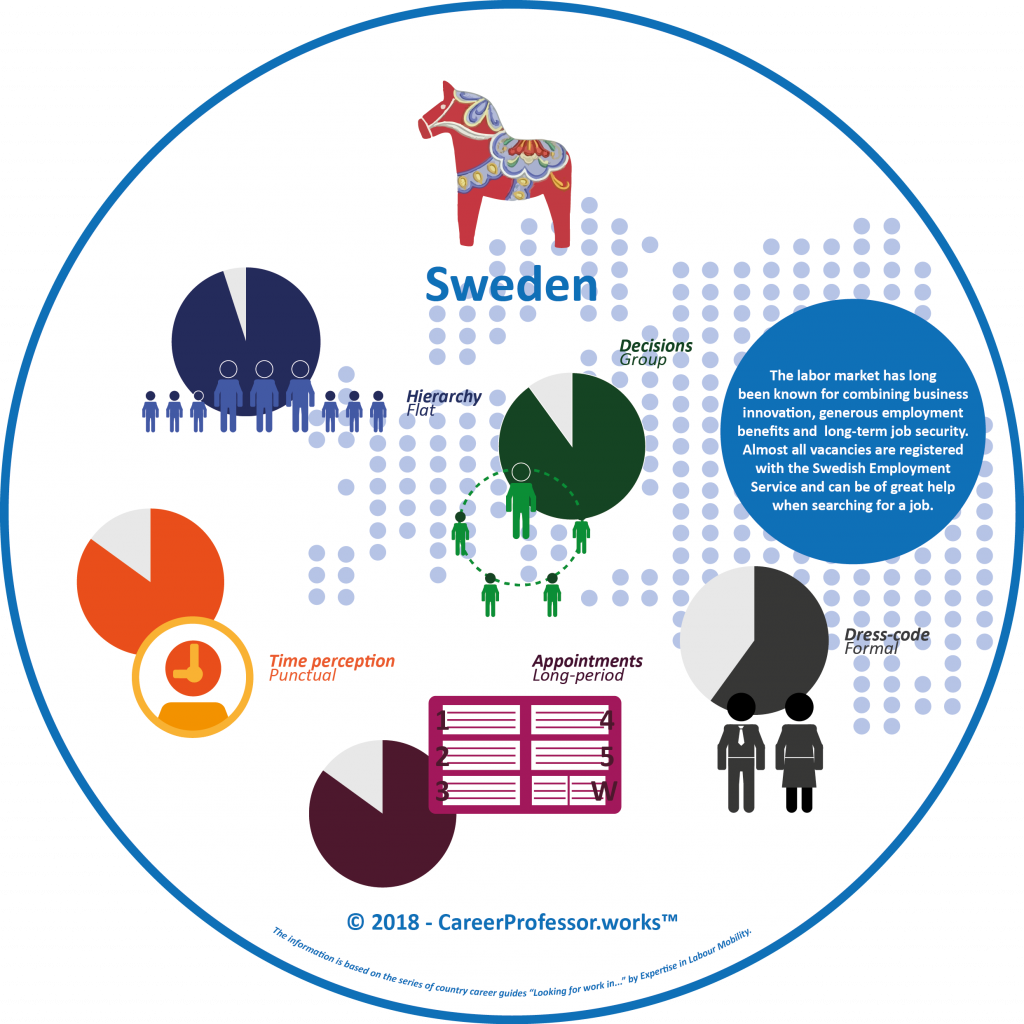Sweden! The country of everything nature, outdoors and wilderness has recently been ranked as the most reputable country in the world for 2018. The adoption of progressive policies, the investments in sustainable ways of living and the focus on fostering a society built on equality, freedom, and tolerance are just some of the reasons that granted Sweden the best reputation in the world. Sweden is located in Northern Europe, bordering Norway and Finland and connected to Denmark by a bridge. It is the third largest country in the European Union with, however, the second lowest population density. Our CareerProfessor.works infographic below will prep you for every challenge a Swedish working environment. Click here for a legend of the infographic.

Hierarchy
The business structure in Sweden is horizontal and functional for the majority of companies in Sweden. Managers expect employers to demonstrate self-initiative and approach the management only when it is necessary. Meetings are usually held annually between the management and other employees, to give feedback and discuss the company’s progress.
Decision-Making
Decisions are usually made at all levels and people have full responsibility for their own actions. Swedes usually don’t mind a fiery debate, so giving your honest opinion will be appreciated. However, keep in mind that consensus is always more important than being right at the end of the day. Decisions are rarely made at first meetings and patience is a virtue you might need to practice.
Time Perception
Working hours are usually 8:30 or 9:00 a.m. to 5 p.m. and a lunch break of an hour between 11:30 a.m. and 1:30 p.m. is very common. Swedes usually have approximately five weeks of vacation per year. Most people are away during the summer and if you are looking forward to an e-mail reply in July, you might want to keep your hopes down.
Appointments
Appointments and meetings are usually scheduled weeks in advance with a set agenda. Once an appointment is scheduled, be sure to be on time and only cancel if there is a good excuse. In case you are running late, make sure to call and inform someone about your delay. Avoid making appointments in June, July or August or close to Christmas or Easter Holidays. A good time to plan a meeting is usually in the morning between 9:00-10:00 am or after lunch between 2:00 – 4:00 pm.
Dress-code
The dress code for a Swedish business setting is usually conservative and formal. Men wear dark suits and ties, while women wear suits or dresses. Having a ‘clean’ look is usually a better choice than being too fashionable. At social gatherings, feel free to wear comfortable clothes and always remember that equality is very important in the Swedish society, so don’t try to show off but rather keep a low profile.
Katinka de Jong,
CareerProfessor.works team
Did you know that the work culture in Sweden is very different from that in Italy?
© 2018 CareerProfessor.works. All Rights Reserved.






